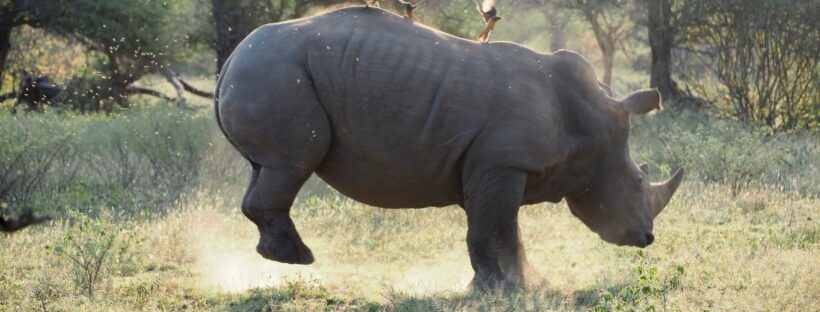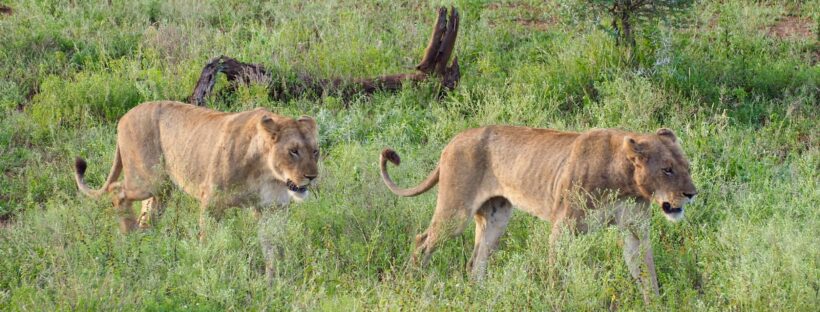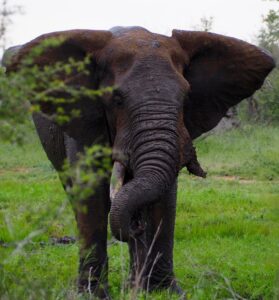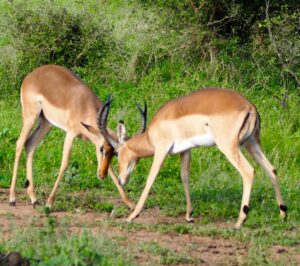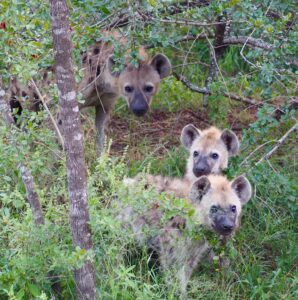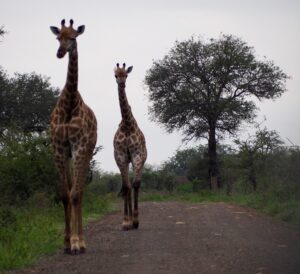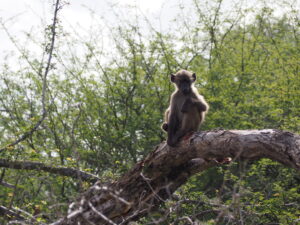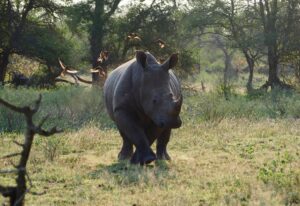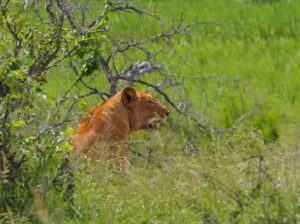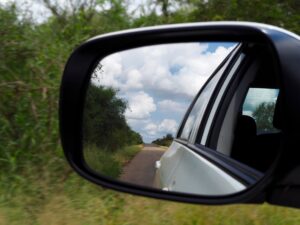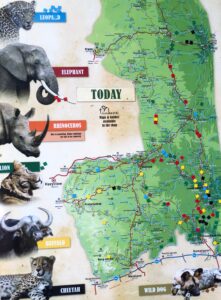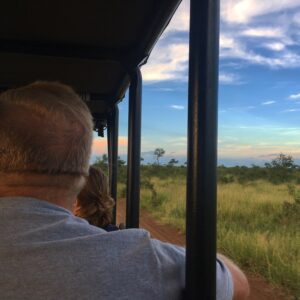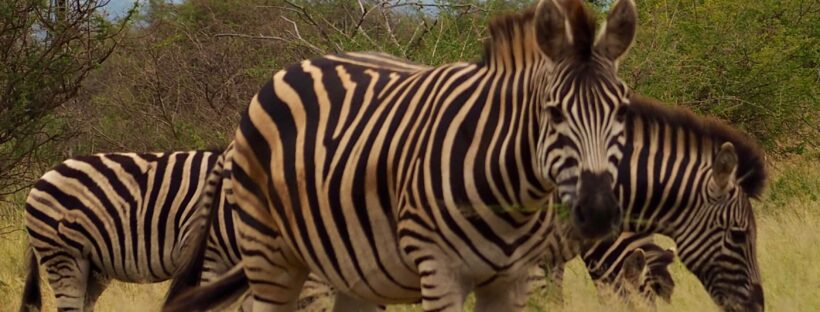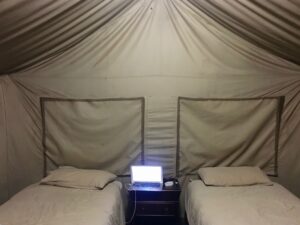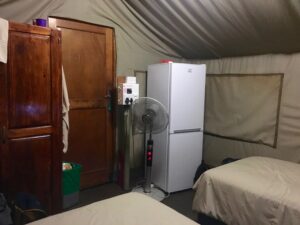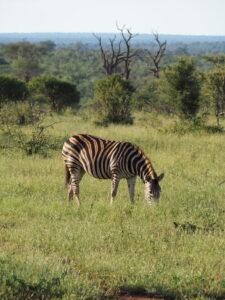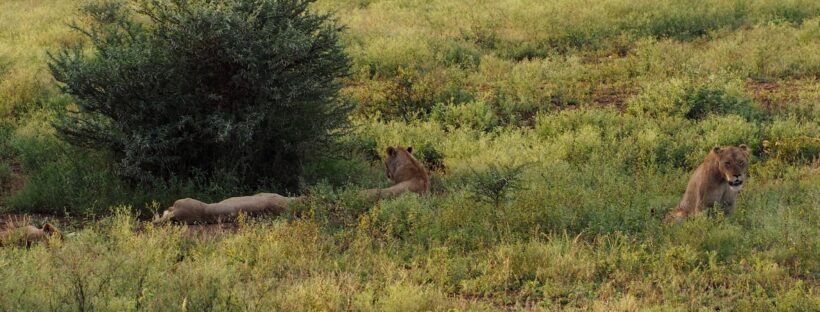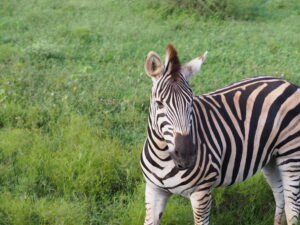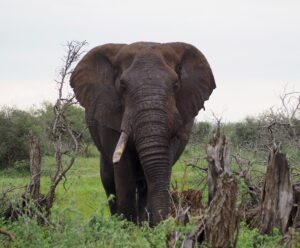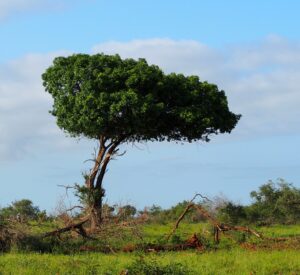Prior to our trip to Kruger National Park, I did a lot of research on where to stay. First I narrowed it down to lower Kruger based on the current drought situation, which impacts where the animals are most likely to be, and then, based on reviews and amenities, finally decided to stay at Lower Sabie. It was a relief to have picked, but the relief only lasted a few minutes because when I went to book – three months before our trip – it was already sold out. Tip number one: book early!
My second choice was Crocodile Bridge Rest Camp, which still had a permanent tent available on our dates, so I quickly booked in. During our time in Kruger, we visited both Lower Sabie and Skukuza, as well as staying in Crocodile Bridge, and they are three quite different camps that I think would suit different people.
CROCODILE BRIDGE REST CAMP
I chose Crocodile Bridge because I knew Gareth would like the more authentic feel. Crocodile Bridge doesn’t have a restaurant or pool, and only a little shop. You get a personal grill (remember to bring charcoal!) and a fridge, and otherwise it’s mostly just you on your own figuring things out. It feels like a real adventure and you never forget where you are or what you’re doing.
I quite liked staying there, as most of the people around us were campers who’d been all over Africa on safari, but if I hadn’t had Gareth I think I would have felt isolated and overwhelmed. If you’re looking for a more “in the bush” feel, this is a good camp for you. It’s quiet, you’re roughing it, and coming home and grilling our dinner and hanging out just the two of us was really nice after long days of driving. It was easy not to cook for lunch because we were always on drives and could pop into a larger camp, but you must be back inside your camp by a certain time (during March, when we were there, it was 6:00 pm) which meant you had to eat dinner wherever you were staying.
SKUKUZA
Skukuza is the place to go for amenities. It is basically a town in the middle of the national park. It has multiple restaurants, a spa, a large shop, a post office, even a doctor’s office! It’s huge, the closest thing to a resort, and where to go if the idea of being far from civilization makes you nervous. (If you go, make sure you go to the steakhouse and get their special – it is SO good.) If what you’re looking for out of your safari is loads of big game drives, followed by an incredible steak dinner and a massage, Skukuza is for you.
LOWER SABIE
Lower Sabie was a blend of the other two camps. Like Skukuza, it had a restaurant, deck overlooking the river, a pool, and quite a big shop. We ended up going there for things we hadn’t packed thinking Crocodile Bridge may have (silverware, plates, etc), and had at least one meal there most days. However, it’s not as busy or commercial as Skukuza was.
VERDICT
If we were to go back to this same area of Kruger, my choice would still be Lower Sabie. The manageable size paired with the option not to cook every night, huge shop full of all the things we didn’t have, and the pool give it the edge to me. Crocodile Bridge and Skukuza are two extremes and would definitely appeal to certain people, but if you’re looking for the average, it’s Lower Sabie. That said, this is a personal choice based on what you’re looking to get out of your Safari, and even if the one you want is booked, they are all great in their own way.
